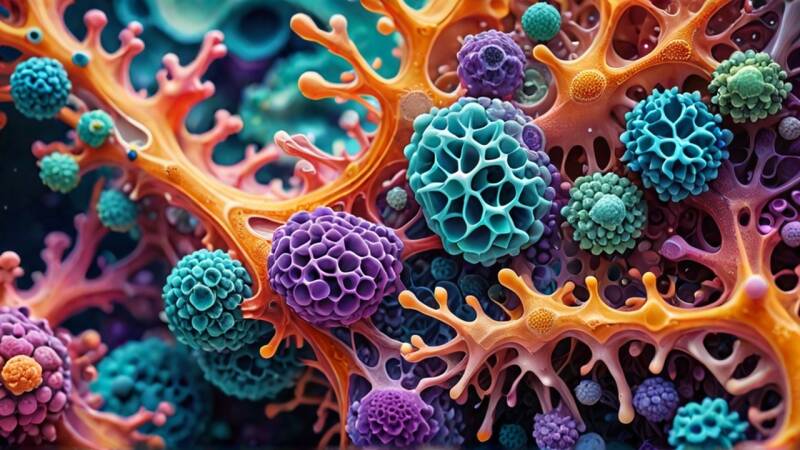"The Hidden Reality: Absorption Is Neurology, Not Nutrition Alone."

🫐 Mineral Pathways Collapse Silently — NIS Restores Their Full Power
Optimal health depends on more than taking supplements. It depends on whether the nervous system can actually recognize, transport, and utilize the minerals 🫐 and cofactors the body requires. When neurological pathways governing absorption lose congruence, even the most advanced supplement protocol becomes little more than an expensive illusion of progress.
This is where the Neurological Integration System (🧠NIS) becomes indispensable. NIS identifies and restores the communication pathways that dictate absorption and cellular utilization—returning the body to its inherent design for precision-level nutrient uptake.
The Hidden Reality: Absorption Is Neurology, Not Nutrition Alone
Every mineral 🫐 below participates in critical biochemical, structural, and electrical functions. Yet each is dependent on intact neurological signaling:
For transport proteins to activate
For ion channels to open
For enzymes to accept cofactors
For organs and glands to regulate uptake
For metabolic pathways to recognize substrates
When these neurological circuits degrade, the body cannot differentiate abundance from deficiency. The result: systemic dysfunction despite supplementation.
NIS corrects these pathways at the brain level, restoring the body’s inherent capacity to absorb, distribute, and utilize nutrients with measurable efficiency.
Key Minerals 🫐 and Cofactors: Their Roles and the Consequences of Neurological Disruption
Calcium (Citrate, Phosphate, Carbonate)
Regulates electrical signaling, bone metabolism, muscle contraction, and vascular tone.
Neurological disruption leads to impaired parathyroi calibration, poor gut uptake, and erratic muscle function.
Magnesium
A cofactor in more than 300 enzymatic reactions, including ATP synthesis.
Neurological dysfunction produces chronic fatigue, arrhythmias, and impaired detoxification regardless of intake.
Phosphorus
Central to ATP, DNA, and cell-membrane structure.
Disrupted pathways alter energy production and cellular repair.
Potassium
Essential for membrane potentials and cardiac stability.
Loss of neurological congruence derails intracellular transport and adrenal regulation.
Sodium
Regulates fluid balance, nerve transmission, and adrenal output.
Neurological interference produces dysautonomia and electrolyte instability.
Sulfur
Required for detoxification, glutathione synthesis, and connective-tissue integrity.
Poor neurological recognition weakens the detox matrix.
Manganese
Cofactor for mitochondrial enzymes and antioxidant pathways.
Neurological disruption limits mitochondrial resilience.
Copper
Critical for hemoglobin formation, connective-tissue crosslinking, and neurotransmitter synthesis.
Neurological miscommunication manifests as anemia and neurochemical imbalance—even with adequate intake.
Zinc
Foundational for immune function, reproductive health, and genomic repair.
Disrupted pathways create immune suppression and slowed tissue regeneration.
Selenium
Central to thyroid hormone activation and antioxidant defenses.
Neurological disconnect traps selenium in circulation instead of cellular uptake.
Iron
Vital for oxygen transport and mitochondrial respiration.
Neurological dysregulation creates the illusion of iron deficiency—leading to supplementation without resolution.
CoQ10
Drives mitochondrial ATP generation.
Neurological malfunction limits CoQ10 shuttling into mitochondria, reducing energy output regardless of dosing.
L-Carnitine
Transports fatty acids into mitochondria.
Neurological disruption restricts transport, degrading metabolic flexibility.
Omega-3 Fatty Acids
Essential for membrane fluidity and anti-inflammatory signaling.
Neurological interference prevents optimal incorporation into neural and cellular membranes.
Iodine
Required for thyroid hormone synthesis.
Neurological incongruence produces metabolic instability even with iodine sufficiency.
Chromium
Key to insulin signaling and glucose control.
Neurological breakdown alters receptor sensitivity and metabolic regulation.
Why Mineral 🫐 Protocols Fail Without Neurological Congruence
Biochemical processes do not operate independently. They rely on:
Cortical oversight of digestive activity
Brain-stem control of ion channels
Autonomic calibration of transport systems
Spinal-segment communication with metabolic organs
Cranial-nerve input regulating absorption reflexes
When these circuits misfire—even slightly—the entire nutrient-absorption system collapses.
This is the silent barrier behind chronic deficiency patterns that persist despite supplementation.
How NIS Restores Absorption Potential
NIS reactivates the neurological circuits that govern:
Gut recognition of minerals 🫐
Transporter protein signaling
Hormonal regulators of absorption
Cellular receptivity and uptake
Mitochondrial utilization pathways
By restoring congruent communication at the brain level, the body regains its innate capacity to interpret, absorb, and apply nutrients with precision.
The result is measurable improvement in:
Energy output
Immune performance
Hormonal balance
Tissue repair
Neuromuscular coordination
Metabolic stability
NIS does not supplement the body—it unlocks the biological intelligence that determines whether nutrients have value at all.
The Clinical Bottom Line
Minerals 🫐 and cofactors are essential.
But without neurological integrity, their absorption is compromised, their utilization is incomplete, and supplementation becomes ineffective.
Restoring these pathways through NIS allows the body to operate as designed—absorbing, deploying, and transforming nutrients into true biological function.
"When the brain recognizes the minerals 🫐, the body can finally use them."
